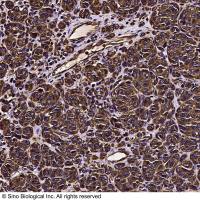Since the mid-1980s, murine retroviral vectors have been used extensively by a number of investigators to clonally mark and genetically modify primitive hematopoietic stem cells (HSC) (1 ,2 ). During this period, both vectors and packaging systems used to generate virus have undergone considerable modification. This has led to increased production of high-titer, replication-defective retrovirus that is more resistant to gene inactivation following integration into hematopoietic cells. Current approaches to murine HSC transduction have become increasingly more standardized, although there remain numerous variations on a theme (see Chapter 15 ). This “classical” method utilizes preconditioned bone-marrow cells (typically from 5-fluorouracil [5-FU]-treated animals) and coculture of these cells with virus-producing packaging cells in the presence of exogenous cytokines. This approach generally yields high proportions of transduced cells that can repopulate lethally irradiated recipient mice for long periods of time, indicating that self-renewal activity is maintained—at least to some extent-in conditions that promote stem-cell cycling. With this approach, it is difficult to re-isolate transduced cells from packaging cells and from nontransduced bone marrow, which would be desirable in some clinically relevant cases.






